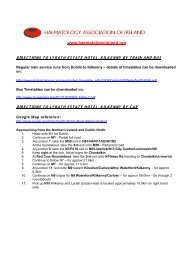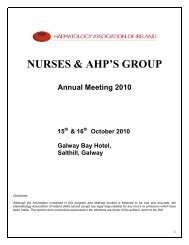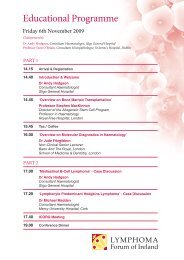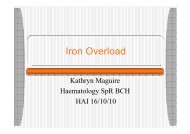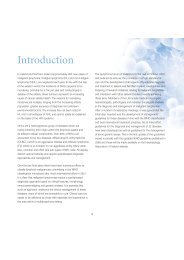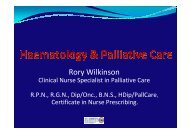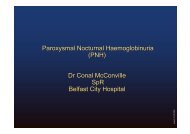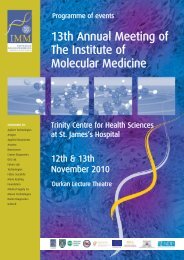Guidelines on Diagnosis and Treatment of Malignant Lymphomas
Guidelines on Diagnosis and Treatment of Malignant Lymphomas
Guidelines on Diagnosis and Treatment of Malignant Lymphomas
You also want an ePaper? Increase the reach of your titles
YUMPU automatically turns print PDFs into web optimized ePapers that Google loves.
Hodgkin lymphoma <strong>and</strong> its differential diagnosis<br />
CD20 CD79a T-Cell CD4 CD30 CD15 EMA<br />
antigen CD8<br />
Nodular lymphocyte<br />
predominant HL + + - - -/+ - +<br />
Classical HL -/+ -/+ - - + + -/+<br />
T-cell rich large B-cell lymphoma + + - - - - -<br />
Anaplastic large cell lymphoma - - +/- CD8>CD4> + - +<br />
CD4&8-ve<br />
KEY +/- The lymphoma cells are comm<strong>on</strong>ly but not always positive<br />
-/+ The lymphoma cells are usually but not always negative<br />
Potential diagnostic pitfalls in Hodgkin lymphoma<br />
With “Typical” H&E Morphology<br />
■ ALCL<br />
■ T cell rich B cell lymphoma<br />
■ Diffuse large B cell lymphoma<br />
With “Atypical” H&E Morphology<br />
■ ALCL<br />
■<br />
■<br />
■<br />
■<br />
■<br />
■<br />
T cell rich B cell lymphoma<br />
Diffuse large B cell lymphoma<br />
Intermediate CHL/DLBCL (Grey z<strong>on</strong>e lymphoma)<br />
Myeloid origin<br />
Mast cell origin<br />
N<strong>on</strong>-lymphoid neoplasms<br />
8




